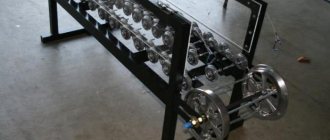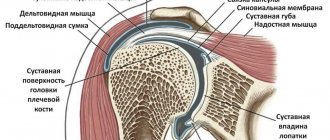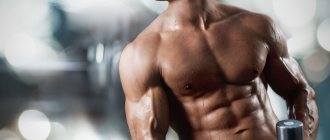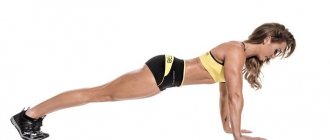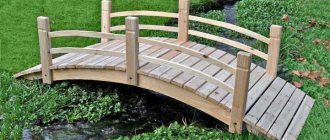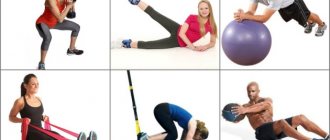You can pump up anywhere. Be it on horizontal bars and parallel bars, or in a free outdoor gym, or at home. You need a little patience, moral resistance to various distracting things, and time. Yes, muscles grow quickly only in fairy tales about “12 weeks from IT guy to Hulk” or “8 weeks from accountant to Miss Bikini.” Exercising at home can be effective if it is done deliberately. A person must understand what he is doing - basic anatomy, differences between exercises, technique, periodization should not be empty words. Do not understand? Alternatively, you can take a good program. Or evaluate in detail the technique of each movement using the video that is filmed during training. But first you need to understand a little theory and go through a couple of programs for beginners.
What happens to muscles during exercise
The most general thing is that training injures muscle fibers, nutrition and recovery help them grow. During class, we perform exercises that damage muscle fibers and create stimuli for growth. When we rest, eat enough proteins, fats and carbohydrates, and sleep, the body's hormonal levels switch to anabolism. The muscles are “repaired”, since the body “understands” that they are needed, the person will soon load them again. Over time, the muscles increase, and the person acquires the physique that he wants.
In fitness theory, changes in the body and muscle tissue are divided into training periods.
Complete beginner
Let's imagine that someone has spent their entire life on the couch. At school he had an exemption from physical education, or some irregular activities like running or football. At the university, for a couple of years he didn’t go anywhere except bars, at all, and then he saw that no one liked a belly and thin arms, and shortness of breath did not add to personal effectiveness. Our imaginary hero decided to build up his muscles.
He bought dumbbells for home, a horizontal bar for the doorway, push-up bars, and dug up a set of weights at his grandfather’s dacha. He doesn’t go to the gym, because greedy trainers there cheat newcomers out of money. He goes to YouTube, where some blogger teaches him how to do push-ups and pull-ups while compensating for part of his body weight by jumping. So our hero does push-ups, pull-ups, squats without weight, and light exercises with dumbbells.
Over the course of a month, his nervous system gets used to “digesting” the load, sleep and appetite improve, and the sore throat that plagued him at the beginning after each lesson goes away. His strength gradually increases, so he can already do more than 20 push-ups, and he is forced to purchase stops and a weighted vest.
In the first 3-4 months, the growth in strength is directly proportional to the growth in technical skill, so when working with a trainer, tasks like pumping up muscles are not set. But you can’t motivate a beginner with this! He wants to quickly see the cubes in place of a soft belly, and the peak of biceps in place of thin “chicken” arms. Therefore, a competent coach will tell the ward about proper nutrition during this difficult period. By normalizing your diet, a person will look better in a matter of weeks. This will be the first visual result.
For training at this time, exercises with body weight or minimal weights are preferable. The program is built around push-ups, pull-ups, goblet squats, lunges with minimal weight, squats without weights and straight abdominal crunches. These exercises need to be performed slowly, and you need to pay attention to your technique.
Hypertrophy
The next couple of years are turning points in the life of a novice fitness specialist. The average person doesn’t see much results from home training and quits. Yes, this is because we were taught that muscles should grow as advertised, that is, in 3-4 months we should see significant changes. After suffering for six months, a person joins the “dusty dumbbells” club. Yes, those who lose weight have a greater chance of long-term friendship with sports. They achieve results mainly through proper nutrition. The more carefully they follow their diet, the better they are able to change themselves. Such people successfully lose weight, and then begin to gain muscle mass.
In general, if you take a disciplined guy who lifts weights 3-4 times a week, increasing the load progressively, and eats for “mass growth,” he will gain about 20 kg in a couple of years. Yes, not all of it will be muscles; the fat component will also increase partly. To prevent this from “spoiling the aesthetics” too much, experts recommend alternating mass-gaining cycles with “drying.” But the fact remains unchanged - in 2 years the genetic potential for muscle hypertrophy in most natural athletes is not exhausted.
Hyperplasia
This word refers to an increase in muscle volume due to the division of muscle fibers. By the way, not all scientific studies confirm that a person, in principle, is able to increase weight due to hyperplasia. Bodybuilding experts refer to the theory of Professor Seluyanov and recommend his methods. Or they suggest training at a high volume with light weights, and they say that this way a person will gain about 10 kg of muscle.
It’s sad, but only a few manage to test words in practice. The point here is not that people are lazy to exercise, but that most theorists very heavily use not only sports nutrition, but also anabolic steroids. Here the science is clear - a person who trains on sports pharmacology is capable of muscle hyperplasia. And his weight is growing much faster.
System adaptation
They say that not every bodybuilder can get to the stage where nothing else works. It's all about the notorious life circumstances. What helps a little here is that strength sports alternate in practice. Some people start just to build up muscles, and then go to CrossFit or powerlifting to start using these muscles. Others alternate between “mass” and “drying” and delay this moment. But when adaptation occurs, it is believed that the athlete can only maintain shape and ensure that injuries do not occur.
Build muscles at home. Home workout program.
Nutrient nuances for home workouts
Proper nutrition is what successful training, including home training, is based on. If you decide to take training seriously, you should radically reconsider your diet.
First of all, remove instant foods and fast food from it - if, of course, you have previously been addicted to such things. It is also undesirable to eat fried foods; give preference to boiled or baked ones.
If you are training to lose weight, then it is important to exclude fast carbohydrates from your diet - sweets, baked goods. What you eat should consist of slow carbohydrates (any type of cereal, except semolina), as well as proteins (meat, legumes, mushrooms, dairy products). Trying to eat less carbohydrates in general is a common mistake, because they are the source of our energy for training.
Your diet should be structured so that you have about 5 meals - but don’t overeat. It is better to eat carbohydrates in the first half of the day - before 15.00, but protein foods - in the second. The ideal “snack” before bed would be regular cottage cheese.
Useful information for losing weight
Cardio workouts to burn fat at home
Kombucha: beneficial properties and contraindications, photos
How to remove a double chin and cheeks: practical tips
Protasov's diet: menu for every day, table
If your goal is to gain weight, then protein foods must be included in every meal. It wouldn’t hurt to take a gainer, which will give the body a large amount of calories and protein necessary for muscle growth.
Otherwise, the principle of nutrition is the same as for those who are losing weight - a balance of proteins and carbohydrates, frequent meals. The only thing is that you can afford to eat more high-calorie foods.
Is it possible to pump up without exercise equipment?
Yes, you can pump up either at home or in the gym. But not everyone succeeds. Why? Lack of discipline, reluctance to learn technique, minimal knowledge about the progression of training loads. The truth is that the first couple of years a beginner should train like a powerlifter or weightlifter to gain mass naturally. Then you can apply the legacy of bodybuilding to its fullest.
What's the problem with home workouts? Of course, there is a lack of equipment. And you will miss not fashionable hack machines and some kind of cable and block exercise machines, but a power rack, a platform, a good bench press, and a competent spotter. Yes, you can strengthen your muscles without this stuff by using kettlebells and dumbbells, as well as doing pull-ups and other exercises with body weight. But if we are operating in categories like “gain 20 kg of muscle”, and not just “look like I’m rocking on the beach,” it’s better to go to the gym. Let it be the cheapest, basic, with old equipment, but for the hall.
Approaches for pumping the buttocks
An effective exercise to pump up your butt at home is the familiar squat.
From the starting position we begin to squat. The pelvis should be moved slightly back (visually it looks as if you are sitting down on a chair).
The knees should be left in a spread position, the heels pressed firmly to the floor. As you exhale, we return to the original position.
To reduce the volume and achieve a beautiful relief, you can slightly modify the exercises - add a leg lift to the side or do a plie squat with your legs slightly apart to the side.
The correct technique for a correctly performed exercise is that the legs are shoulder-width apart, the feet are located next to each other. Look ahead of you.
Inhale - step back. Raise your foot onto your toes. An important nuance is that the supporting leg bends 90 degrees.
Exhale – starting position. The body should rise due to the work of the butt muscles, not the legs.
While performing lunges, watch your posture - it should be as straight as possible.
Newbie mistakes
To begin with, those who want to know how to pump up at home google biceps exercises and begin to do them fanatically. But the point is not at all in the biceps, but in the absence in the body of the prerequisites for creating an anabolic background. Simply put, a person simply “has nothing to grow” muscles from, especially if he neglected nutrition and believed that if he was training at home, then mashed potatoes with sausage would pass for an athlete’s diet.
The most important mistake is the reluctance to develop strength. Yes, yes, all the athletes of the “golden era” were good strength athletes. And even any modern crossfitter will perform CCM on individual movements in powerlifting. But the gloss of sports convinces us that “it will do” - bend your arms with something, do some exercises in a high-repetition mode, and you will get pumped up. No. Strength, by the way, can be developed to a certain limit at home. The only question is desire.
High expectations
Yes, guys are even worse than girls in this regard. If the latter believe that after a couple of series of glute bridges without weight and some steps to the side with elastic bands, they will look like protruding fitness bikinis, then the former are ready to argue with foam at the mouth that the same Denis Gusev could to pump up on horizontal bars if he didn’t have access to the gym. Everyone needs a role model, but if you do home fitness, you don't need to set goals like “look like a model in 3 months.”
The myth of champion volumes
Almost any person who has a photo on Instagram with huge shoulders and biceps can fit into a standard suit in life. Yes, big guys pump up their muscles before recording the results of their labors. And poor beginners do 200 repetitions with biceps expanders just to get any closer. Of course, you can develop endurance in this way, but not strength or volume.
Lack of motivation
We are not talking about videos from the Internet, where guys from the ghetto do pull-ups on the horizontal bars, and their wealthier “sports colleagues” pump iron in expensive gyms. We are talking about banal laziness. Biceps and deltoids may not be a priority for a student - for example, he is ready to play a game until 2 a.m. and then sleep through the workout. Or go have a beer instead of working out on the horizontal bars. Or... And if summer comes, you should completely forget about your studies. It's hot! In winter it is cold. In autumn - depression. And so on, in a circle. The one who will fanatically carry out the exercise program for years will get pumped up.
How to Build ALL Muscles at Home WITHOUT Iron!
How to make a rocking chair with your own hands
The selection of high-quality material determines how high-quality and durable the chair you make will be. After all, the material should be light and durable, since the owner of this chair may get used to carrying it around. Those who do not want to pay a lot of money for such a thing ask themselves how to make a rocking chair with their own hands at home, choosing the most suitable and high-quality materials. Therefore, when selecting materials, we recommend making a rocking chair from wood, reed, or wicker. Also, sometimes the chair is made from light metals.
A rocking chair is the perfect way to create an atmosphere of comfort and tranquility.
Plywood rocking chair
Plywood - Can fall apart due to water, but is an excellent option for creating a chair. Because of this, many are interested in how to make a rocking chair with their own hands, drawings from plywood. We recommend making such chairs for your home or apartment. Therefore, if you want to make such a chair, then you should carefully monitor it if it is in the yard.
A rocking chair made by yourself in a classic style with curved runners will be an excellent option for your first experience in making furniture.
To create a simple and comfortable rocking chair, you need to prepare:
- For the sides: plywood sheets (1200x1400 mm, a moisture-resistant type of plywood would be an excellent option) 30 milliliters thick;
- For the base: 3 boards (20x150x800 mm);
- For sitting: 32 small boards (15x39x1200);
- Portable router;
- Screwdriver;
- Electric jigsaw;
- Portable electric grinding machine;
- Self-tapping screws (20 pieces);
- Wood glue;
- Putty;
- Varnish.
Making a rocking chair with your own hands is not at all difficult; a minimal set of tools and a great desire are enough.
Sidewalls
To begin with, the side parts are prepared, which are also the runners, as well as the base for the chair. Two parts are cut out with a jigsaw.
To begin with, let's draw out 2 sides of the chair using the template and carefully cut them out according to the markings with a jigsaw.
Frames
With this action, they are created with markings on the sidewalls, which are drilled (20x150x800 mm). One of the main conditions for this operation is its accuracy. After this, grooves are made that correspond to the grooves of the jumpers. They are 5 mm deep. Before installing the frames, coat these holes with glue. To prevent the material from bursting, holes are made in advance.
All edges of the parts must be sanded with sandpaper.
Boarding
Mark the holes in the planks (15x39x1200) that make up the seat. Mark 20 cm from each edge, draw lines where the screws will be fixed. The distance between parts is 1 cm.
We glue the supports to the side walls with wood glue and, for reliability, secure each of the bars with a self-tapping screw.
Finishing elements
It is made with putty dissolved with sawdust, the holes where the boards were attached are hidden, and the surface is leveled. Sand after the putty has dried. Then they are varnished with water, after which a mattress or carpet can be placed on the chair for comfort. It is better to do this, because a stationary mattress will be wet from the rain.
The ends of the sidewalls can be varnished or painted with glossy paint.
How to make a rocking chair out of wood
When starting to create a chair, many people ask the question: how to make a rocking chair with your own hands from wood, while finding suitable drawings and sizes? They search for a long time on various sites, ask on forums, and so on. In this section we will tell you how to make it high-quality, reliable, convenient and modern.
These rocking chairs are beautiful and can decorate your interior in your apartment, on the balcony or in the courtyard.
In order to create a chair, you will need:
- hacksaw with fine teeth;
- a plane to process the structure;
- belt machine for grinding parts;
- folding milling machine;
- plumb line;
- screwdriver;
- hammer;
- portable ruler and pencil;
- clamp;
- brush.
You can create a drawing at your own discretion and to your own size, or you can find it on the Internet.
To begin, make 1 meter grooves in a wooden board measuring 4.5 by 4.5 centimeters. Grind the ends of the boards to fit into the slots of the runners. Place the runner boards in hot water until the wood is pliable for bending. Using the jig, bend the board to a suitable radius and set it aside until it is completely dry. Place the dried runners on the legs, treating the grooves with glue in advance.
Anyone can make a new homemade rocking chair at home
Exercises without machines for beginners
The truth is that it is better for a beginner not to buy equipment for home at all. It is not yet known whether he will like to study, whether he will devote enough time to physical development, or whether he will abandon the whole thing halfway and return to the sofa.
With body weight you can do:
- “air” squats and lunges;
- Bulgarian split squats with one leg resting on the sofa;
- pistol squats;
- push-ups with different hand widths;
- pull-ups with different arm widths;
- planks, supermen, crunches
The best exercises without iron
Simple squat
Stand up straight, cross your arms in front of your chest, try to keep your back vertical, and do not pull your buttocks back. With an inhalation, lower yourself down, spreading your knees to the sides, your pelvis below your knees. Exhale – stand up straight. Do not lean forward, do not change the position of your back, and do not change the position of your knees - do not bring them inward.
Lunges
This exercise is similar to a side squat. From the starting position for a simple squat, you need to step back with one leg and leave the other in the “heel under the pelvic bone” position. Then perform a squat until your knee touches the floor. You should do the same number of lunges on each leg.
Bulgarian squats
Technically, this is a lunge with the “back” leg fixed on a sofa or other support. You need to lower yourself straight, so that the knee of the front leg is not “sharp”, and the angle between the shin and the floor remains straight.
Pistol squats
Technically they resemble regular ones, but you need to stand on a low support (for example, a step or step, if you have one at home), bend your knee and lower yourself so that your pelvis is below the knee. Reaching the starting position should be done without rocking the body back and forth.
Push ups
This exercise is known to everyone from school physical education lessons. A beginner should start with the palms in the middle position - under the shoulders. Your arms should be perpendicular to the floor and your feet should be supported. The back is tense, the hips are too. You need to smoothly lower your chest to the floor, spreading your elbows, and smoothly push up from the floor.
Pull-ups
It is also better to start pull-ups with a medium grip width. Hang on the horizontal bar, palms facing away from your face, and gently bend your elbows. Pull your chest toward the bar and lower yourself straight down.
Plank and side plank
You need to take the starting position for push-ups, tighten your abs, pull in your stomach, and spend from 30 seconds to 1 minute in this static position. The side plank is an exercise on the forearm, with the side parallel to the floor.
Superman
Lying on your stomach, lift your hips and legs, as well as your arms and head, off the floor. From the outside it looks like Superman flying. An exercise can be either dynamic, when sets and repetitions are performed one after another, or static, when a person freezes at the top point and does not perform the movement dynamically.
Crunches and reverse crunches
From a lying position on the floor, you need to either lift the body and bring the lower ribs to the pelvic bones, or lift the pelvis and legs up at the same time. In both movement options, the lower back should be pressed to the floor and the abs should be tightened.
You can do other exercises - burpees, squat jumps, and lunges, but they have nothing to do with pumping up muscles. These are functional movements for developing general endurance, which are used in athletics and martial arts.
how to build muscle at home
Snacks before and after classes
It is not recommended to eat food immediately before starting classes. It is ideal to have a snack a couple of hours before training; light carbohydrates are best.
After exercise, you can eat an hour later. Fruits or protein foods are suitable, which will help build abdominal muscles.
Immediately after you have finished doing all the exercises, it is recommended to slightly stretch your muscles. This is additional stimulation to make them more elastic.
For stretching, there are also effective split exercises at home. With constant training, you can do the splits after a few months of training.
Equipment for full training at home
There are ideal options, and there are low-budget ones. In the first case, a garage is allocated for training; it contains a power frame, a barbell, a platform, a bench for bench press, and a set of weights. Additionally - dumbbells. By the way, it’s not all that expensive to buy. You can search on Avito, at sales, and also from private owners. Many people will be happy to get rid of equipment they don't use. And modern equipment manufacturers make a lot of good hardware with small home gyms in mind.
If the budget is strictly limited, you will still have to choose small equipment:
- Fitness mat;
- Bench or step;
- Dumbbells with the ability to change weight - stackable;
- Horizontal bar and parallel bars, or horizontal bar and push-ups;
- Rubber shock absorbers
How to replace all this?
The steps of the ladder replace the stepper, and two strong chairs replace the push-ups. But nothing can replace the burden. Yes, you can write a lot of good things about the benefits of exercises with water bottles, sandbags, and natural stones, but this is all fine if a person knows how to hold his back. If he doesn’t know how to simultaneously gather his shoulder blades toward his spine and contract his abs, then he’s unlikely to be able to lift weights well in the same goblet squat with a water bottle.
Therefore, if you can’t buy weights for yourself, it’s better to train on parallel bars and horizontal bars for now, while looking for dumbbells and barbells at flea markets or Avito. For those who do not believe that bodyweight exercises can be difficult, there are manuals on callisthenics.
Exercise from a supine position
Another effective exercise for the buttocks at home is lifting the pelvis while lying on your back.
This version of the exercise is ideal because it can be done at the end of heavy approaches or sets.
It is enough to lie on your back, align your arms along your body. The feet should be on the surface, legs bent. As you exhale, lift your buttocks. All emphasis should be on the feet.
When you reach the highest point of lifting your butt, try to hold for a few seconds.
Return to your original position, do not fall to the floor.
If everything is done correctly, then only those muscles that should be trained will be used.
Effective arm exercises at home will help tighten your arm muscles and remove sagging. To do this, you will need small dumbbells or water bottles.
A set of exercises for all muscle groups
For beginners, it is better to practice fullbody programs at home. They don’t need splits yet, that is, differentiation into “top”, “bottom” or by muscle groups, since the fullbody will provide an overall increase in load faster.
Workout 1
- Plank – 3 minutes, broken down
- Standing Dumbbell Press – 3 sets of 12 reps
- Pull-ups with rubber or shock absorber pull to the chest from a vertical position – 3 to 10-12
- Romanian dumbbell row or forward bend with dumbbells – 3 x 10
- Classic lunges – 3 to 12.
Workout 2
- Side plank – 3 minutes on each side
- Push-ups with weights or regular 3 to 12
- Bent-over dumbbell rows 3 x 12
- Squat with 1 dumbbell on the chest – 3 to 12-15
- Bulgarian split squats without weight – 3 x 12-15
You can perform these complexes one after another every other day. The training regimen can be set every other day, or twice a week, if recovery is really bad. Ideally, increase working weights when a strength plateau occurs - take dumbbells a little heavier, but reduce the number of repetitions by two.
Tips and tricks to help you achieve your goal
Regular classes. It is recommended at least three to four times a week.
Short breaks between exercises. Try to do all the approaches one after another with a short break.
Drinking during exercise - It is allowed to drink some clean water after exercise.
Make sure there are minimal breaks between sets.
Follow the exercise technique. Try not to cheat.
If possible, in good weather, you can add running. It is enough to go for a run once every couple of days.
With the right set of effective exercises at home, you can get the desired result in a very short period.
To do this, it is recommended to regularly complete all tasks, monitor your diet (what and when to eat), and get enough sleep.
How to develop your legs
It is often mistakenly believed that jumping and jumping “swing” the legs. Repeated jumping rope, running and other cardio activities are more likely to develop endurance. To develop strength, you will either have to jump on a support, for example, a box 50 cm high, or perform movements with weights.
You can realistically do the following movements at home:
- Goblet squats and pause squats;
- Lunges with dumbbells;
- Squats with dumbbells on the chest and a rubber shock absorber;
- Dumbbell floor rows and Romanian rows
- If more significant weight is required, it is recommended to either add rubber shock absorbers, or switch to “one-legged” versions of squats and deadlifts, or, nevertheless, go to the gym.
Arm muscle development
There are just few features here - the same exercises are done as in the gym, only with dumbbells.
Bicep curls
While sitting or standing, you need to press your forearms to your body, and bend your elbows, lifting the dumbbells to your shoulders, and then slowly lower them.
Triceps overhead extensions
Sitting on a bench, lift one dumbbell behind your head and gently straighten your arms at the elbows. There is no need to “insert” your elbows until they click, smoothness is important.
Standing Dumbbell Shoulder Press
You need to stand up straight, bring the projectiles to your shoulders and smoothly move them along an arcuate path to the top of your head.
How to pump up at home: program from StyleFitness
Monday:
- Pull-ups
You can perform pull-ups with a wide grip, both behind the head and to the chest, or even combine them. The grip width should be such that the forearms at their highest point are parallel to each other, in other words, perpendicular to the floor.
It is very important to keep your shoulder blades pulled together and your head upright to avoid hunching at the top. We perform 3 approaches to the maximum, without weight, rest time between approaches is 3 minutes.
- Squats
Place your feet shoulder-width apart or narrower. The tilt of the back should be approximately 45 degrees, but not lower. The lowest point of the thigh during a squat should be parallel to the floor or even lower. It is recommended to do squats with light weight dumbbells.
We perform 25 repetitions of 8 approaches, increasing the repetitions by 2 more times every week.
- Push ups
When performing push-ups, try to keep your legs and back straight so that they form a straight line. With your arms spread wide apart and your elbows spread out as far as possible, the chest muscles work best. That is why the maximum load falls on the shoulder joints. Please use caution.
Push-ups with a wide grip should be performed 20 times for 5 approaches, and every week the number of repetitions should be increased by 2 times.
- Burpees.
This exercise should be performed for the maximum number of repetitions in 5 minutes.
- Bridge
Lie on your back and with your knees bent, place your feet approximately 20 cm from your hips. Your feet should be shoulder-width apart and your arms slightly bent at the elbow. Using both arms and legs to push, with your abs tense, gently lift your hips up so that your back is arched.
Perform the bridge 10 times, trying to keep your arms and legs as straight as possible.
- Tabata "Plank".
The whole body turns into one straight line. Try to stay in this position for 20 seconds. Perform 8 sets, with no more than 10 seconds of rest time between each set.
Wednesday:
- Tabata Push-ups.
We take a position with emphasis on our knees and do push-ups with a large amplitude for 20 seconds. We rest for the next 10 seconds. We perform 8 approaches.
- Tabata "Squats".
At a fast pace, with arms extended forward and moving the pelvis back, we squat for 20 seconds. We do 8 approaches, rest time – 10 seconds between approaches.
- Plank.
The body position should be as for push-ups and with emphasis on the toes. We perform 3 approaches, to the maximum.
- Tabata "Burpee".
Performed at a fast pace, 8 approaches lasting 20 seconds, rest time – 10 seconds.
- Pull-ups.
We perform 5 sets of 10 repetitions, trying to pull ourselves up to at least 60% of the maximum repetitions every minute.
Features of training for girls
“Women’s” training is not much different from men’s. A newbie girl can do the same basic fullbody plan. If she wants to focus on the buttocks, you can add 1-2 sets of leg swings back with weights or a band, and hip abductions to the side. But all this is not necessary. At the beginner level, it is better to ensure regular training and avoid technical mistakes.
There are few basic rules:
- The priority is strength. Cardio can be replaced by walking, cycling, or not done at all, just walking 10,000 steps a day;
- Training should be regular, every other day. No matter how much you would like to train only “problem areas,” you need to do exercises for the whole body, otherwise the risk of injury increases;
- You still have to eat right; you can’t achieve everything through training and a “calorie deficit” alone.
Nutrition
Mass training requires at least 4 g of carbohydrates and 2 g of protein per kilogram of weight. In this case, it is better to keep fats at the level of 1 g per kilo of current body weight. Getting calories from natural foods is a must.
Recommendations:
- Drink 2-3 liters of plain water;
- Avoid empty calories from sauces, sugar and fast food;
- Eat regularly, at regular intervals
Ideal products
All these natural products will help you gain weight:
- Pasta, potatoes and sweet potatoes for carbohydrates;
- Legumes of all types - for carbohydrates and protein;
- Rice is the most accessible source of energy for a bodybuilder;
- Eggs, poultry – protein;
- Fish and seafood – protein and omega-three;
- Beef and offal – protein and iron;
- Vegetables - fiber;
- Fruits – energy of vitamins and natural simple carbohydrates;
- Nuts – for healthy fats
